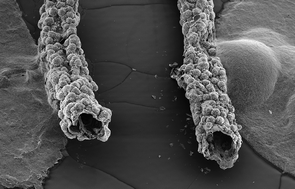Bioactive functional materials: a perspective on phosphate-based glasses
Abstract
The general trend in biomaterials is to use and employ materials that play an active role in tissue regeneration rather than passive and inert materials. Therefore, understanding how a material interacts with the surrounding environments, including cells and tissue fluid, allows material design to be tailored so that implants can be constructed to promote a specific biological response, helping them better perform their function. This class of materials has been described as the “Third Generation” of biomaterials. Phosphate based glasses fall into this category and it has been shown that the properties of these glasses can be tuned via their composition according to the desired end application. These glasses can be prepared as melt-quenched or sol-gel bulk form suitable for potential hard tissue engineering applications and as vehicles for


 Please wait while we load your content...
Please wait while we load your content...